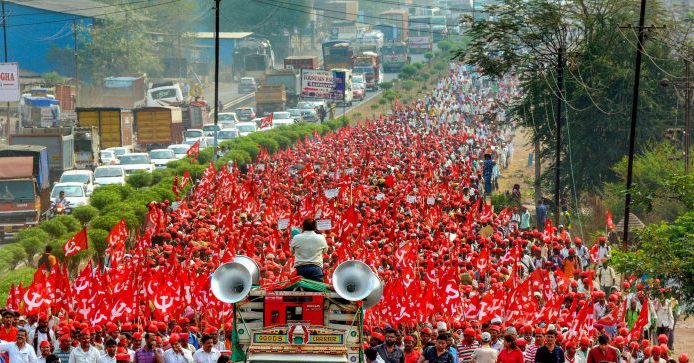The Green Revolution in India has no doubt revolutionised the irrigation system by reforming traditional cultivation methods with technology and high yield varieties. But it also has some drawbacks which are evident from experiences in various parts of the country. The post-Green Revolution period witnessed a rise in the input cost of agricultural products for cultivation that increased the difficulty in livelihood sustainability of small and marginal farmers.
With high input cost of cultivation, a large proportion of land came under the control of capitalist farmers. In other words, the Green Revolution in India gave rise to a new class of capitalist farmers, predominantly in Punjab and Haryana. Various research studies show a structural change due to the Green Revolution in the economic and social relations of production in various states of India.
The neoliberal policy adopted in the last decade of the twentieth century seems to have worsened the situation through the compression of small and marginal farmers’ income. It has further changed the structural composition of agrarian markets in the country. Small peasants get exploited having to increasingly find off-farm incomes, largely through precarious wage labour activities in order to make a living. It has increased the possibility of the counter-movement to neoliberalism.

Image Credit: PARI
The various land reforms in India have failed in redistributing land resources to small and marginal farmers. Indian trajectories of development are often ridden with narratives of alienation, disempowerment and poverty for small peasants. This agrarian crisis and distress, in turn, resulted in an alarming number of farmer suicides. The state of Maharastra has constituted the largest number of farmer suicides.
In this dark patch of history, the remarkable and astounding Kisaan March under the leadership of the All India Kisan Sabha, an affiliate of the Communist Party of India (Marxist), is a matter of great significance. The long Kisaan March comprising approximately 50000 people started from Nashik on March 6 and reached Bombay in 6 days.
It is a very grave prejudice on the part of analysts and scholars to appropriate the entire march only towards the dissent of the farmers against unfulfilled promises of the Devendra Fadnavis’ government. It has a precedence – the anguish of the farmers is rooted in the failed promises of the Green Revolution, land redistribution and the neoliberal regime. The Kisaan March has many lessons to teach the socio-political movements in the country.
Also Read: We Talked To Rukmini Rao About The National Convention Of Women Farmers
The story of the Kisaan March
The majority of those who marched to Mumbai in the Kisaan March for 180 kilometres are from tribal communities – who are dispossessed with agricultural land. The demands of the farmers comprise farm loan waivers and the implementation of the Forest Land Rights Act (FRA), 2006.
Another demand of the Kisaan March entails a regular access to the Public Distribution System (PDS) which hardly exists in the case of land tillers (not owners). They have no institutional credit to their name but suffer severely in case of failed crops.
The demands of the farmers in their protest manifesto consist of a complete and unconditional waiver of loans and electricity bills. The All India Kisan Sabha’s study reveals that 1,753 debt-ridden farmers have killed themselves since June 2017. The second major demand includes governmental withdrawal from the forceful acquisition of farmlands in the name of ‘development projects’ like the super-highway and tracks for bullet trains; as well as the implementation of FRA in order to benefit the tribal community.

Women march in support of the Kisaan March in Sikar, Rajasthan. Image Credit: NewsClick
The third major demand of the farmers includes a minimum support price of 1.5 times the input cost for farm produce. The farmers demanded the implementation of the Swaminathan Commission Recommendations and compensation for crop failure due to unseasonal rain, hailstorm and attack by pink bollworm.
Most of the demands by the protesting farmers can be addressed with immediate effect. The protest drew the attention of the Government of Maharastra. The government has reportedly accepted some of the major demands of the farmers and also set up a committee on the issue of FRA violations. The government has assured that they will be fulfilling their promises in the coming six months.
There was not a single incidence of violence or aggression on the part of the farmers who were marching. After braving 6 days of blistering heat, the protesters have gathered at Azad Maidan and government personnel has stated that they will not be allowed to proceed beyond Azad Maidan. The discipline with which the farmers have conducted the Kisaan March should set a precedent for future movements in India.
Also Read: Relevance Of The Delhi Anganwadi Workers Movement: A Case Study
Featured Image Credit: PTI/The Print
About the author(s)
Manohar Boda is a Research Scholar based at JNU - New Delhi.




